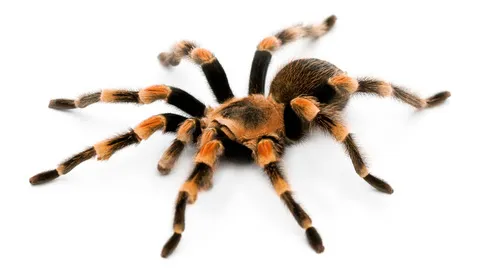Understanding Redknee Tarantulas
The Redknee Tarantula (Brachypelma hamorii), a captivating and popular pet, hails from the arid regions of Mexico. Before you even consider handling one, it’s crucial to understand these fascinating creatures. Their popularity stems from their relatively docile nature and striking appearance, characterized by a dark body and vibrant red-orange markings on their leg joints. However, understanding their specific needs, behaviors, and potential hazards is paramount to ensure a safe and enjoyable experience for both you and your tarantula. This guide will delve into the specifics of these creatures to prepare you for the exciting world of redknee tarantula ownership.
Appearance and Characteristics
Redknee Tarantulas are easily recognizable by their striking appearance. They typically have a dark carapace and body, with distinct red-orange markings on their leg joints, which give them their common name. As adults, they can reach a leg span of up to 6 inches. Males and females have distinct appearances, with males often being smaller and having a less vibrant coloration. They are covered in tiny hairs (setae) that provide sensory information and help them detect vibrations. Their bodies are divided into two main parts the cephalothorax (head and thorax fused) and the abdomen. Their fangs are used to inject venom into their prey, though their venom is not considered highly dangerous to humans. Their longevity is also a key characteristic, with females living for up to 25 years or more and males typically living for about 5-7 years.
Temperament and Behavior
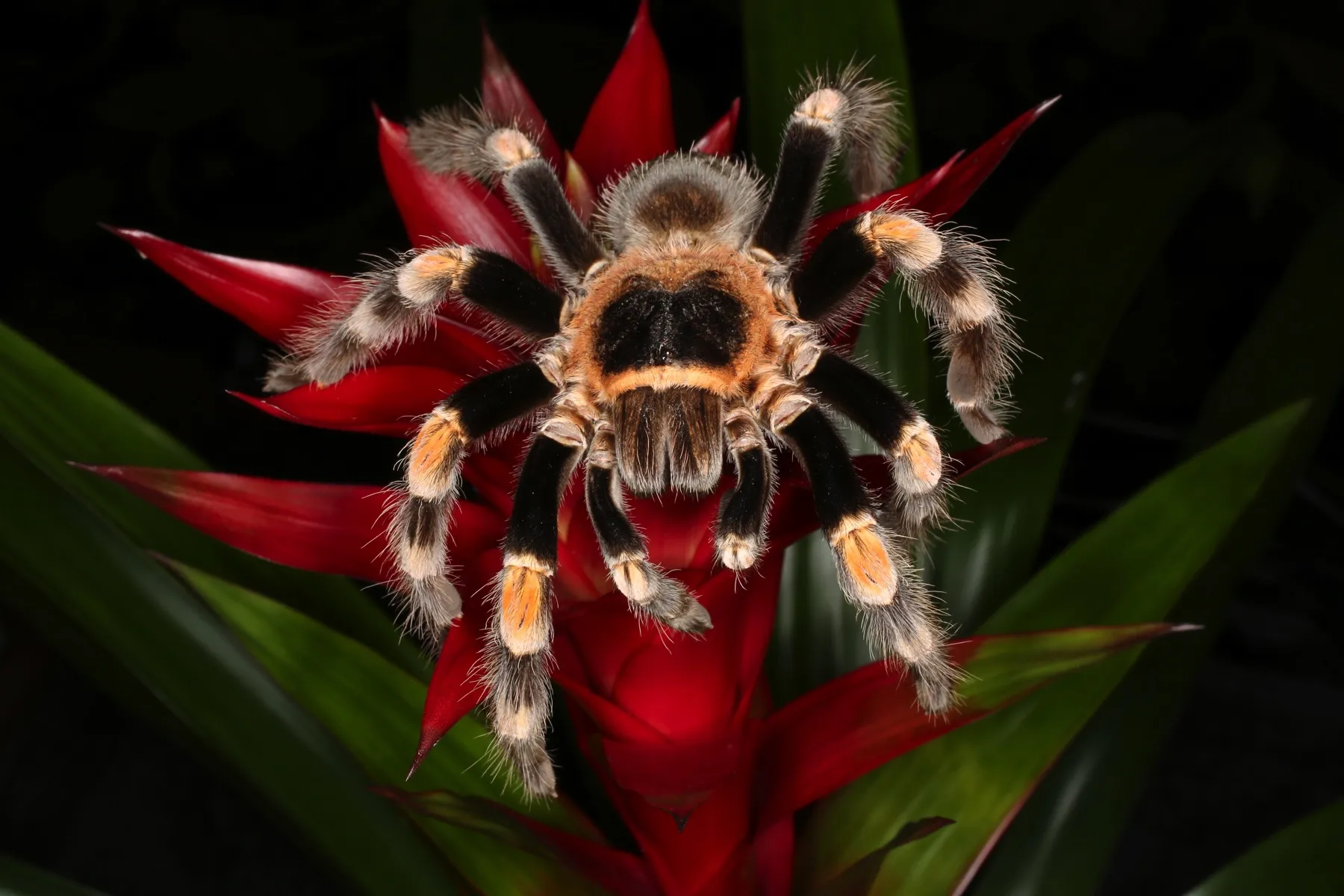
Redknee Tarantulas are generally considered docile tarantulas, making them suitable for experienced keepers and beginners. They are often slow-moving and less likely to bite compared to other tarantula species. However, like all tarantulas, they can exhibit defensive behaviors. They may flick urticating hairs (tiny, irritating hairs) from their abdomen as a defense mechanism. They can also display threat postures, such as rearing up or presenting their fangs, when feeling threatened. Observing their behavior is essential. A stressed tarantula might retreat to its burrow or display defensive postures. Understanding these behaviors will help you anticipate their reactions and handle them safely, reducing the risk of stress or injury to both you and the tarantula. Careful observation is key to safe and enjoyable redknee tarantula handling.
Choosing the Right Redknee Tarantula
Selecting the right Redknee Tarantula is the first step towards a positive experience. Whether you are a beginner or an experienced keeper, choosing a healthy specimen is critical. This section provides guidance on where to acquire your tarantula and how to identify a healthy individual. Prioritizing the well-being of your tarantula means making informed decisions from the very beginning of your pet ownership journey. Remember that a healthy tarantula is a happy tarantula, making the entire handling process more enjoyable and less stressful for everyone involved. Always prioritize the ethics and welfare of the animal when purchasing a redknee tarantula.
Where to Acquire Your Tarantula
You have several options for acquiring a Redknee Tarantula. Reputable breeders are often the best source, as they typically prioritize the health and well-being of their tarantulas. Local pet stores, particularly those specializing in reptiles and invertebrates, can also be a good option, but do your research on the store’s reputation. Online retailers specializing in tarantulas offer a vast selection and can provide detailed information about each specimen. When choosing a source, consider the breeder’s experience and reputation, the health of their tarantulas, and their commitment to ethical practices. It’s vital to avoid purchasing from sources that may prioritize profit over the welfare of the animal. Always ensure the source is reputable and transparent about the tarantula’s origin and health.
Selecting a Healthy Specimen
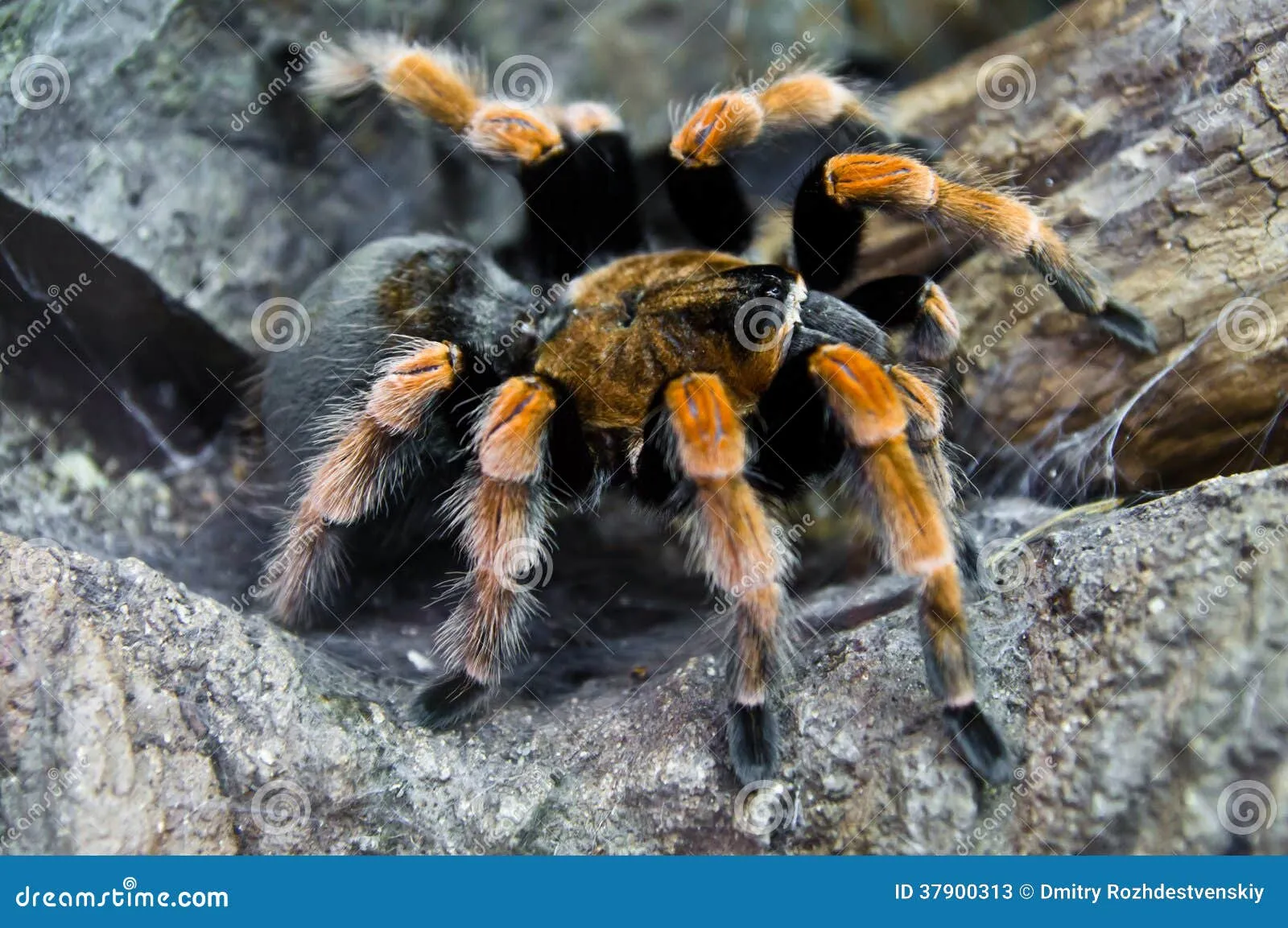
When selecting a Redknee Tarantula, inspect the specimen carefully. Look for an active tarantula that is alert and responsive to its environment. Check for a plump abdomen; a shrunken abdomen can indicate dehydration or poor health. Look for clean, healthy-looking legs and no signs of parasites or injuries. Avoid tarantulas that appear lethargic, have a loss of coordination, or show signs of illness such as unusual discharge or discolored body parts. A healthy tarantula should also have a good appetite. If possible, observe the tarantula feeding to ensure it eats regularly. Selecting a healthy specimen lays the foundation for a positive experience, minimizing the risk of complications and ensuring the well-being of your pet.
Essential Equipment for Handling
Proper equipment is essential for safely handling a Redknee Tarantula. This section covers the recommended enclosure setup and the necessary tools to minimize risk and ensure a smooth handling experience. Having the right equipment not only protects both you and your tarantula, but also provides a comfortable environment for the tarantula to live in. Prioritizing the right equipment will increase the likelihood of your ability to handle your tarantula and overall enjoyable pet ownership.
Enclosure Setup
A proper enclosure provides a safe and comfortable environment for your Redknee Tarantula. The enclosure should be appropriately sized, allowing the tarantula to move around comfortably. A glass or acrylic terrarium with a secure lid is ideal. Provide a substrate layer, such as coco fiber or peat moss, to allow for burrowing and maintain humidity. Include a water dish, a hide or shelter, and some decorations like artificial plants to provide enrichment. Proper ventilation is crucial to prevent the build-up of mold and maintain a healthy environment. Make sure the enclosure is in a stable location and away from direct sunlight or drafts. By providing a secure and appropriate enclosure, you minimize stress on the tarantula, making handling sessions less stressful.
Tools for Safe Handling
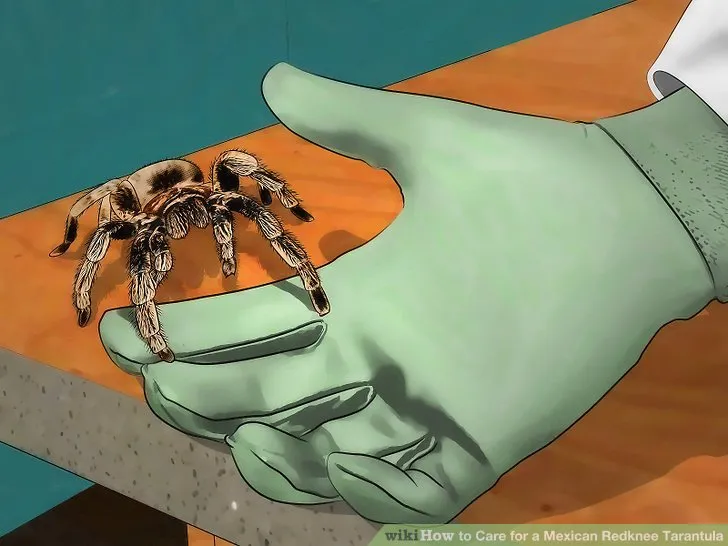
While handling, a few essential tools can aid in a safe experience. A long pair of soft tongs is recommended for gently guiding the tarantula, allowing you to maintain a safe distance. A small, clear container can be used to temporarily contain the tarantula if needed. A soft brush can be used to gently remove urticating hairs if they are flicked at you. Always have a first-aid kit on hand, especially for allergic reactions. Using the correct handling tools can minimize the risk of accidental injury and provide peace of mind. Be sure to always prioritize the safety of both the keeper and the tarantula.
Preparing for Your First Handling Session
Before attempting to handle your Redknee Tarantula, careful preparation is crucial. This section outlines the necessary steps to create a safe environment, evaluate the tarantula’s mood, and set the stage for a positive interaction. Careful preparation will set the foundation for a successful handling experience and minimize potential risks. Taking the time to prepare can improve your safety and the tarantula’s overall well-being.
Creating a Safe Environment
Before handling, clear the area around the enclosure of any potential hazards. Close windows and doors to prevent the tarantula from escaping. Consider handling the tarantula in a small, enclosed space, such as a bathroom, to limit the escape risk. Prepare a clear surface, such as a table, for handling. Make sure you have all of your handling tools on hand. Reduce distractions and noise to minimize stress on the tarantula. A calm, controlled environment will make handling easier and more enjoyable.
Checking the Tarantula’s Mood
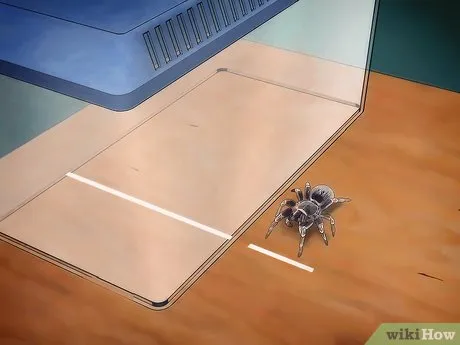
Before handling, observe your tarantula’s behavior. Look for signs of stress, such as the tarantula rearing up, flicking hairs, or retreating to its burrow. If the tarantula appears stressed or agitated, it’s best to postpone handling. Wait for the tarantula to appear calm and relaxed. Avoid handling a tarantula immediately after feeding or molting, as they may be more vulnerable or defensive. When in doubt, it’s always best to err on the side of caution. Check the tarantula’s mood before each session to assess if this is a good time to handle the animal. This will ensure the best outcome for your pet and yourself.
Proper Handling Techniques
Mastering proper handling techniques is essential for a safe and positive experience with your Redknee Tarantula. This section focuses on the recommended ‘scoop and guide’ method, provides tips on preventing falls and injuries, and advises on the appropriate duration and frequency of handling sessions. Always remember that patience and a gentle touch are key to a successful handling session. Prioritizing safe handling techniques ensures that both you and your tarantula remain safe and comfortable throughout the process.
The ‘Scoop and Guide’ Method
The ‘scoop and guide’ method is a safe way to handle Redknee Tarantulas. Gently encourage the tarantula to walk onto your hand by using a soft brush or gently nudging it. Never try to grab or force the tarantula, as this can cause stress and potentially lead to a bite. Support the tarantula’s body by keeping your hand level and close to the ground. If the tarantula starts to move too quickly or seems agitated, gently place your hand back in the enclosure. Always move slowly and deliberately, avoiding sudden movements. The goal is to encourage the tarantula to willingly move onto your hand and be handled calmly. Patience and gentleness are vital during this process.
Avoiding Falls and Injuries
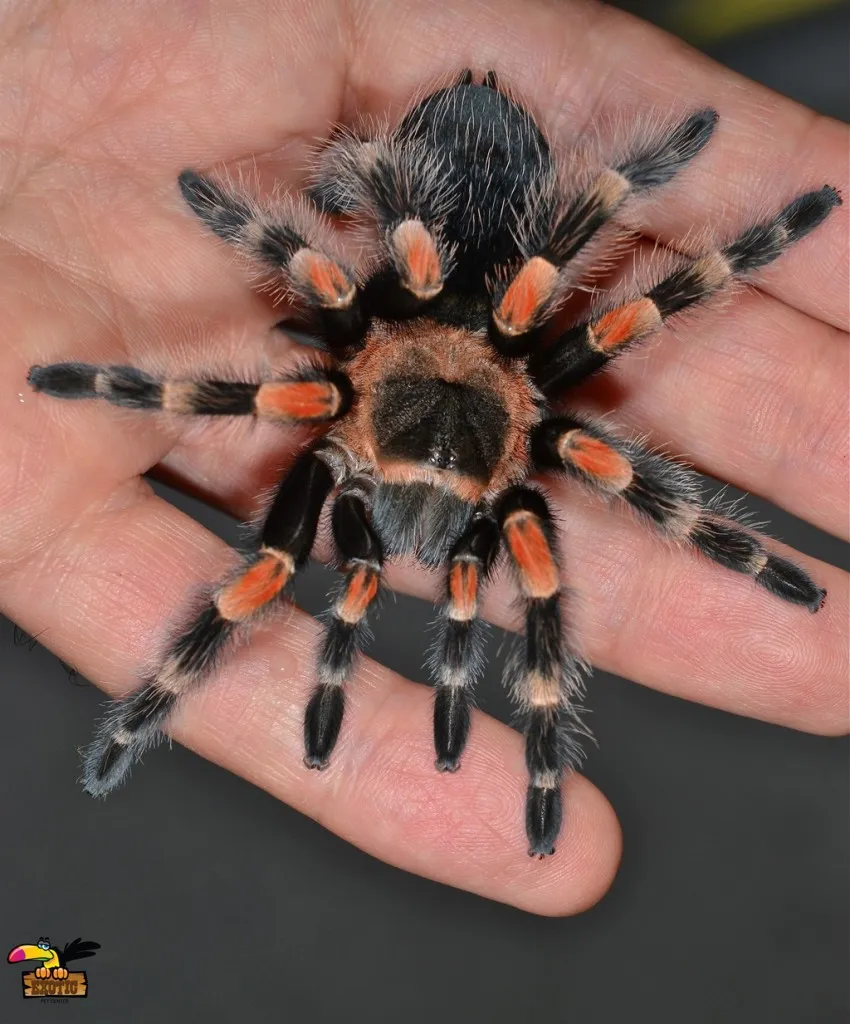
One of the biggest risks during handling is the potential for the tarantula to fall. Always handle the tarantula close to the ground or over a soft surface. Avoid handling the tarantula at heights. If the tarantula starts to fall, try to gently guide it to a safe landing. Be aware of the tarantula’s movements and always keep a hand nearby to prevent a fall. Never try to catch a falling tarantula. Falls can cause serious injuries, so take all precautions to avoid them. Always prioritize the tarantula’s safety during handling sessions.
Handling Duration and Frequency
Keep handling sessions short and infrequent. Redknee Tarantulas do not require handling for their well-being. Limiting handling to a few minutes a few times per month is generally recommended. Observe the tarantula’s behavior, and if it shows signs of stress, immediately end the session. Avoid handling the tarantula too frequently, as this can cause stress and anxiety. Make the handling a positive experience for both the keeper and the tarantula. Prioritize the tarantula’s well-being and avoid handling if it is not necessary. Always aim for short, controlled interactions.
Potential Risks and Safety Measures
While Redknee Tarantulas are generally docile, it’s important to be aware of the potential risks associated with handling. This section details the risks of bites, the implications of urticating hairs, and how to respond to allergic reactions. Always prioritize safety by taking the necessary precautions. Recognizing and addressing any risks will contribute to a secure and enjoyable ownership experience. Keeping your safety in mind during handling can make it a more positive experience.
Bite Risks and Prevention
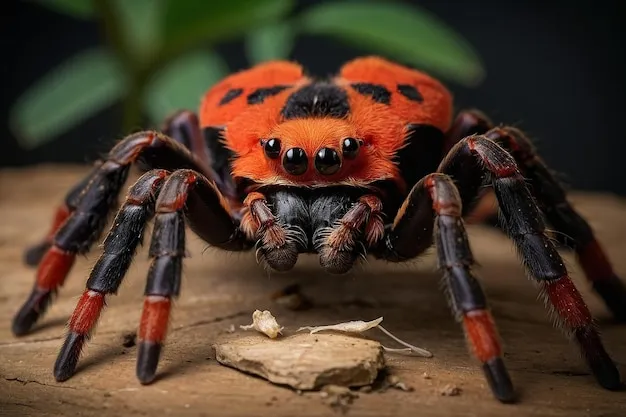
While Redknee Tarantulas are not highly venomous, a bite can be painful and cause localized swelling and discomfort. The best way to prevent bites is to avoid actions that might provoke the tarantula. Never grab or startle the tarantula. Always move slowly and gently. If the tarantula appears agitated, gently place it back in its enclosure. If a bite occurs, remain calm. Gently clean the bite area with soap and water. Apply a cold compress to reduce swelling. Monitor the bite for any signs of infection. Seek medical attention if you experience severe symptoms or have any concerns. Keeping a safe approach to handling greatly reduces the risk of being bitten.
Allergic Reactions and First Aid
Some people may be allergic to the urticating hairs flicked by Redknee Tarantulas. These hairs can cause skin irritation, itching, and respiratory problems. If you experience an allergic reaction, wash the affected area with soap and water. Avoid touching your eyes or face. If you experience breathing difficulties, seek immediate medical attention. Keeping an antihistamine on hand can be helpful if you know you are sensitive to insect bites or spider hairs. Taking precautions, such as wearing gloves and a mask, can help prevent reactions. Knowing how to respond in case of an allergic reaction can help you manage any adverse effects.
Post-Handling Care and Observation
After a handling session, it’s important to practice proper post-handling care and observation. This section covers cleaning and hygiene practices, and the importance of monitoring your tarantula’s health. Following these steps will help to maintain the health of your Redknee Tarantula. Be mindful of these steps after each handling session to ensure that the tarantula remains healthy and happy.
Cleaning and Hygiene
Wash your hands thoroughly with soap and water after handling your Redknee Tarantula, even if no contact with the tarantula’s body occurred. This helps to remove any potential allergens or irritants. Regularly clean the enclosure, removing any uneaten food and replacing the substrate as needed. Dispose of any waste materials properly. Maintaining a clean enclosure minimizes the risk of bacterial growth and ensures a healthy environment for the tarantula. Keeping the environment clean will lead to a more comfortable life for your Redknee Tarantula.
Monitoring Tarantula Health
After handling, observe your tarantula for any signs of stress or injury. Check for any changes in its behavior or appetite. Look for any signs of illness, such as lethargy, loss of coordination, or discharge. If you notice anything unusual, consult with a veterinarian experienced in treating tarantulas. Maintain a record of your tarantula’s molting cycles and feeding habits. Regular observation helps to detect any potential health issues early. Early detection is key to providing the tarantula with prompt treatment. By paying close attention, you can ensure the long-term health and well-being of your pet.
Conclusion
Handling Redknee Tarantulas can be a rewarding experience for those prepared to approach it with respect and caution. By understanding their behavior, providing a safe environment, and practicing proper handling techniques, you can minimize risks and enjoy the unique experience of interacting with these fascinating creatures. Remember that your Redknee Tarantula’s well-being should always be your top priority. If you are prepared for the experience of handling a Redknee Tarantula, then you will create a positive relationship and allow the tarantula to have a comfortable and safe life. Enjoy your journey of Redknee Tarantula ownership and handling!
